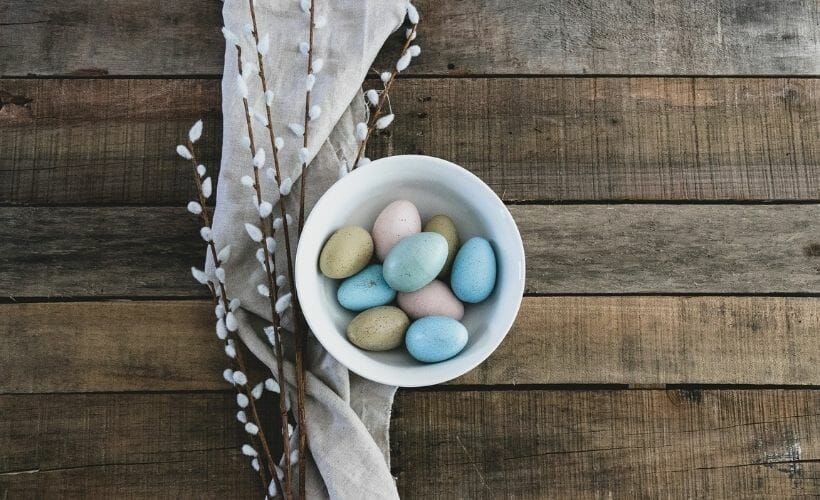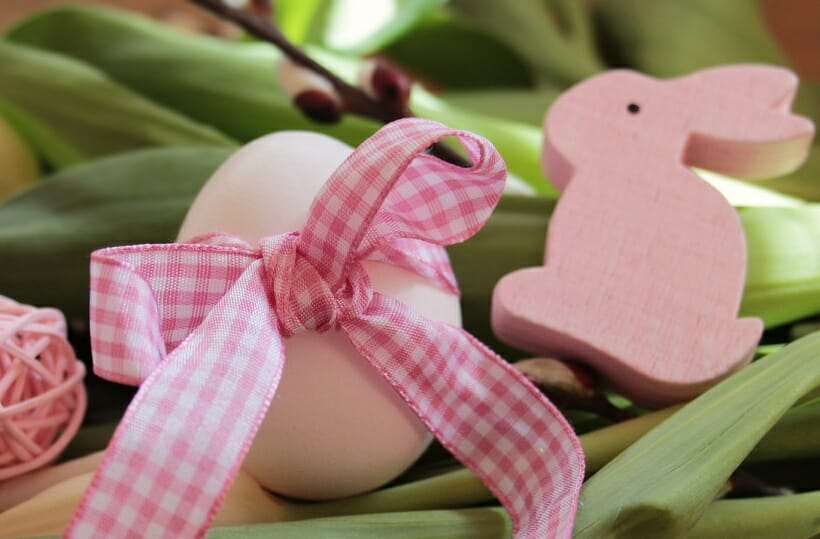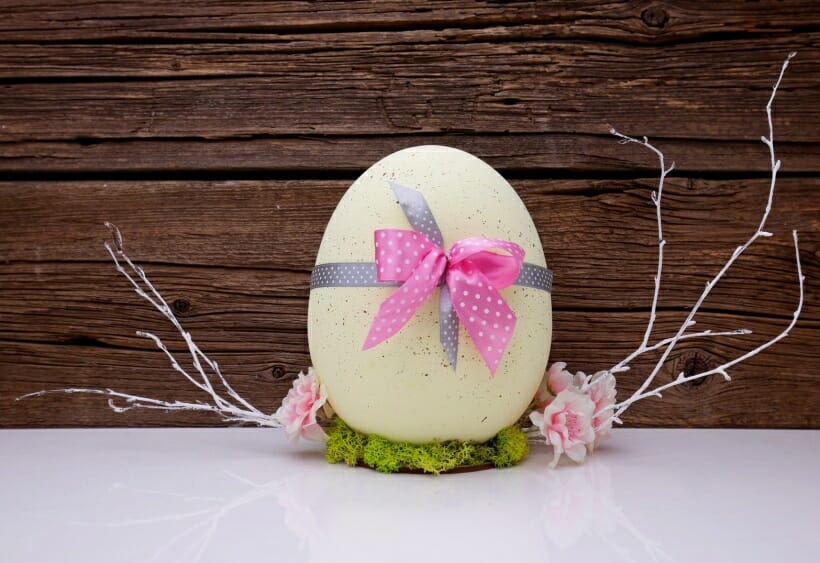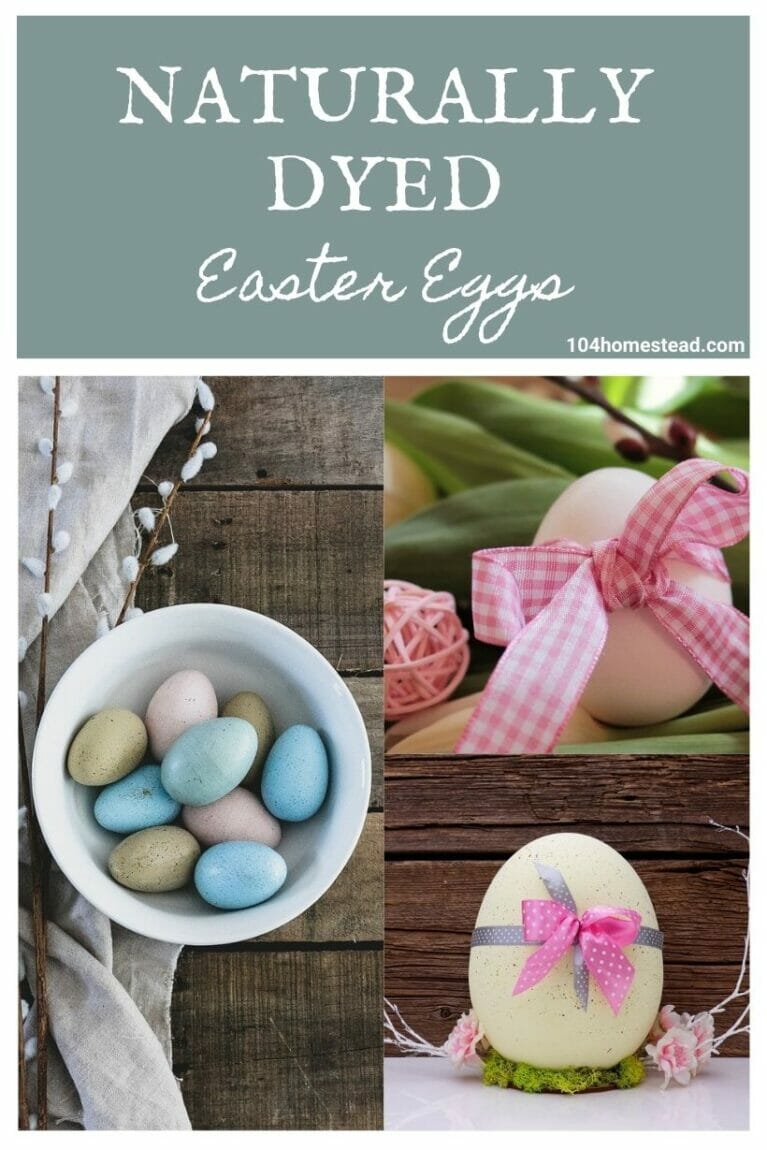Making Natural Easter Egg Dyes in a Variety of Colors
Learn how to make Easter egg dyes using natural ingredients like onion skins, instant coffee, blueberries, beets, and more.

My kids love dying Easter Eggs, but with a little one, I don’t particularly appreciate using those chemical dyes or food colorings that stain clothes. We prefer to dye using natural dyes to dye easter eggs. They still have the power to stain (I highly recommend “junk” clothes), but the stains don’t set as severely and there is no fear of the littlest one drinking any since most of the ingredients can be found in the kitchen.
These natural dyes are safe to be used on hollow eggshells or hard-boiled eggs.
Instructions for making your own natural Easter Egg dyes
Things to know before you start dunking eggs is that natural dye takes more time than commercial dyes to get vibrant colors. I typically have the kids help me make the dyes in the morning and put the dyes in half-gallon mason jars. We submerge the eggs in the dye in the late afternoon or evening and leave them in the dye overnight.
If you want to hard boil the eggs instead of using empty egg shells, you can add the eggs and vinegar when you lower the heat to simmer for most of the recipes below instead of waiting for the dye to cool. The recipes that are ideal for hard-boiled eggs are marked with an *
So what do we use to get our colors of the rainbow?
Red Easter Egg Dye Using Paprika
Bring 2 cups of water to a boil. Add 4 Tbsp paprika and white vinegar, and mix until combined. Remove from heat and allow the mixture to cool.
* For a hard-boiled red dye, use the recipe below for orange, but switch to red onion.
* Orange Natural Egg Dye Using Yellow Onions
Onion skin dye is an ancient Russian/Ukrainian tradition and probably the most popular way to dye Easter eggs.
Simmer a large handful of yellow onion skins and 1 teaspoon of kosher salt in 1 cup of water for 15 minutes. Strain out the onion skins. Allow the mixture to cool and then add 3 teaspoons of white vinegar.
Yellow Homemade Egg Dye Using Chamomile Tea
Steep 4 or more bags of chamomile tea in 1 cup of boiling water. Once cooled, add 2 teaspoons of white vinegar.
* For a hard-boiled yellow dye, heat 1 tablespoon of turmeric in 2 cups of water on high heat. Once it’s reached a boil, lower the heat and simmer for 20 minutes.

* Green Egg Dye Recipe with Blueberries & Turmeric
Bring 1 cup of blueberries and 2 cups of water to a boil in a pot. Once boiling, reduce heat to a simmer and add 1 tablespoon of turmeric and 1 teaspoon of lemon juice. Allow the mixture to simmer for 20 minutes. Strain out the blueberries. Allow the mixture to cool, and add 2 tablespoons of white vinegar.
* Blue DIY Egg Dye Using Blueberries or Red Cabbage
Bring 2 cups of blueberries and 2 cups of water to a boil in a pot. Once boiling, reduce heat to and simmer for 30 minutes. Strain out the blueberries. Allow the mixture to cool, and add 2 tablespoons of white vinegar
Another way to get blue egg dye is by using red cabbage. Weird, right? Chop half a red cabbage, then place it into a pot. Add just enough water to cover the cabbage, then boil on high. Once it begins to boil, lower the heat and simmer for about an hour. Strain out the cabbage. Allow the mixture to cool, and add 2 tablespoons of white vinegar.
Purple Homemade Egg Dye Using Grape Juice
This recipe is possibly the easiest to do. Simply mix 2 cups of grape juice and 1 tablespoon of white vinegar and you’re ready to dip your eggs.
* Pink Natural Egg Dye Using Beet Juice
For hollow shell eggs, simply mix 2 cups of pickled beet juice and 2 teaspoons of white vinegar. That’s it! If you’re preparing hard-boiled eggs, use 2 parts beet juice to 1 part water and boil eggs as usual.
Gold Egg Dye Recipe Using Instant Coffee
Mix 3 tablespoons of instant coffee into 1 cup of boiling water. Allow the mixture to sit for at least 8 hours before dying the easter eggs. There is no need to strain out the coffee grounds.
* For a hard-boiled dark gold/bronze dye, boil eggs as you usually would using a mixture of 1 part black coffee and 1 part water.

What happens if I dye eggs without vinegar?
The acidity in vinegar makes the colors more vibrant. If you don’t add an acid, you’ll end up with pastel eggs – which are equally as pretty as the bold colors. If you want vibrant colors, but you don’t have vinegar, you can use lemon juice, lime juice, or crushed-up vitamin C tablets instead.
Natural Egg Dye Tips & Tricks
Many people only choose to dye white eggs, but we’ve dyed all shades of our brown eggs and had some beautiful results.
If you haven’t tried it yet, maybe you should consider dying brown eggs.
Medium browns dyed pink turn to a beautiful mauve. Brown eggs dyed green turn a nice sage color.
For the bold colors, weigh the egg(s) down in the solution and leave it overnight. Note: If you are soaking overnight, omit the vinegar until an hour before removing the eggs from the solution or the shells may become brittle.
Better yet, find a local farmer who sells rainbow-colored eggs and leave them au natural. We are blessed with some beautiful pinks, blues, and greens in our baskets daily. That’s because we have a flock that lays a wide variety of colors. Find out which breeds of chickens lay in which colors.
Two companies that I know of, Natural Earth Paint and Natural Easter Egg Decorating Dye Kit, carry natural egg dye kits if you don’t have the supplies on hand to make your own. What I like about both of these companies is that they keep it affordable (which is sometimes rare when it comes to natural alternatives).
Make sure you swing by our Facebook Page and share your colorful baskets!
Oh, and before I close this out, I must stress that although rabbits are marvelous, the Easter Bunny should be the only bunny visiting kids on Easter. Rabbits don’t make suitable pets for kids.
If you’ve found value in this blog post and enjoyed reading it, why not share it with your Pinterest community? Pin the image below and spread the love!


I have been looking for some more natural egg dye ideas. Thanks for the great list. We use black walnuts for dye. It makes things a really pretty brown color.
Lovely colours, Jess. Naturally dyed eggs are my favorite.
Thank you Chris!
Thanks so much for this! I was just thinking about eggs for this year and how I’d like to do something more natural instead of store dyes. Plus, I love the more muted colors with natural dying instead of the bright store bought colors. Thanks for sharing at From The Farm! ~ MamaGing.com
This is such an informative post , I did share.
How do you farm on 1/4 acre?
What restrictions do you face?
I an still trying researching and would love to start with some chickens.
I have a friend ( Janet , timber creek farm ) who has been kind enough to educate me about start up and care.
Than you
Wendy
Hi Wendy! I have a little writeup on my homestead located at https://104homestead.com/jessica-quarter-acre-maine/ that might interest you. I’ll be featuring a different homesteader each week to give people like yourself ideas and inspiration. This week I’m going to be featuring a homestead even smaller than mine. Be sure to check back every Friday (or subscribe and it will come right to your inbox).
AWESOME!!!! Can’t wait to share!